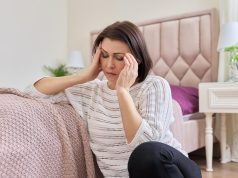Globally, CVDs Were Leading Cause of Disability-Adjusted Life Years, Deaths in 2023
437 million CVD DALYs reported globally in 2023, representing a 1.4-fold increase from 1990; increase in number of CVD deaths also seen
Guidelines Issued for Vaccination as Part of Cardiovascular Care
Recommendations encourage flu, pneumococcal, COVID-19, RSV, and zoster vaccinations in individuals with cardiovascular disease
GLP-1 Receptor Agonists Tied to Reduced Mortality in Patients With Psoriasis
Risk reductions stronger in those with psoriasis versus those with obesity or type 2 diabetes without psoriasis
Nonoptimal Levels of Traditional Risk Factors Almost Universal Before CVD
In both men and women, prevalence of one or more traditional risk factor before CVD was >99 percent across age groups
Prevention Strategies Developed for Cardiovascular Manifestations of COVID
Strategies include implementing targeted cardiovascular rehabilitation for those with acute and long COVID
FDA Grants Accelerated Approval for First Treatment for Barth Syndrome
Forzinity helps improve strength of muscle to straighten the leg and works by improving mitochondria structure and function
Only 36.4 Percent of U.S. Adults Had No CVD Risk Factors in Recent Years
Higher percentage of men than women had two or more CVD risk factors; more older adults had risk factors
Three Cardiometabolic Risk Factors ID’d as Having the Highest Risk for Mortality in MASLD
Greatest risk for mortality seen with high blood pressure, glucose intolerance, and low high-density lipoprotein cholesterol
Nonatherothrombotic Causes Account for Much of MI Burden in Younger Adults
Women have much lower population incidence of MI, especially MI caused by atherothrombosis
Model Based on Mammogram Features, Age Can Predict CV Risk
DeepSurv model using mammography features and age has similar performance to modern models



















